- Home
- Adele Griffin
The Unfinished Life of Addison Stone
The Unfinished Life of Addison Stone Read online
Copyright © 2014 Adele Griffin
This is a work of fiction. Names, characters, places, and incidents either are the product of the author’s imagination or are used fictitiously, and any resemblance to actual persons, living or dead, businesses, companies, events, or locales is entirely coincidental.
All rights reserved.
Published in the United States by Soho Teen
an imprint of
Soho Press, Inc.
853 Broadway
New York, NY 10003
Library of Congress Cataloging-in-Publication Data
Griffin, Adele.
The unfinished life of Addison Stone / Adele Griffin.
p. cm
ISBN 978-1-61695-360-7
eISBN 978-1-61695-361-4
1. Mystery and detective stories. 2. Artists—Fiction.
3. Celebrities—Fiction. 4. New York (N.Y.)—Fiction. I. Title.
PZ7.G881325Un 2014
[Fic]—dc23 2014009576
Interior design by Janine Agro, Soho Press, Inc.
v3.1
for Charlotte Sheedy
“I want a brighter word than bright.”
—JOHN KEATS
Contents
Cover
Title Page
Copyright
Dedication
Epigraph
Prologue
I. Home Again
II. Growing Up Stone
III. “She Looked Like a Skeleton in a T-Shirt.”
IV. Art Room Fable
V. “They Need to Let Me Come Back.”
VI. Orderly Ghosts
VII. “There’s Always So Much Traffic Around Him.”
VIII. He’s Just So Sticky and Useless
IX. “I’m Blooming, Finally.”
X. The Joy Dizzies
XI. All the Children are Insane.
Acknowledgments
Photograph of Addison Stone, courtesy of Lincoln Reed
“Who Broke Our Butterfly?”: Art & Artist magazine cover. Art & Artist’s cover story on Addison Stone was the highest-selling issue in the magazine’s history.
PROLOGUE
I MET ADDISON STONE only once. She had enrolled as a freshman in my creative writing workshop at Pratt Institute. There were only six other students in my class, and as a visiting instructor, I was happy we’d be such a tight group. Fifteen minutes into the session, I’d figured this “A. Stone” person wasn’t attending. So when a girl skittered in, late and unapologetic, I was annoyed.
She was striking: tall yet delicate, with pale skin and dark eyes and two braids like a pair of flat black ropes past her shoulders. The scars on her wrists caught me off guard. She didn’t speak, not even to apologize for being late. Perhaps most telling, she scraped back the only empty chair so that it stood outside the circle I’d arranged. When she sat, her paint-spattered arms dropped at her sides as if she had no use of them.
We’d been making introductions, so I started over for her benefit. We went around the circle again: a few sentences each about who we were and where we’d come from. When we got to Addison, she shook her head.
“I’m not here yet,” she said softly. Startled, some of the other students looked to me for a reaction. Who did this girl think she was? I had none. I was thinking, Who’d remember anything else about that day except for the girl who told them she wasn’t there?
BEFORE THEY LEFT, I gave an assignment: pick a memory and describe it in the voice of yourself at the age you lived through it. One paragraph or one page—no more. Due in my inbox by five o’clock on Friday. At 5:13 on Friday, Addison’s essay hit:
I’m last. I’m late. I pull my chair away for comfort. I’m invisible and exposed. My words establish my walls. My whole life I’m two people. I am I, and I am Her. I’ve been asked to pin down a moment. But do I care about my past? Why would I want to look behind when I’m hurtling forward so fast? I’m mostly scared I can’t catch up with me. I am always almost out of time.
A moment later, my inbox pinged with Addison’s next email.
I’m dropping the class.
And that was it.
Of course I never forgot her. When I heard that Addison had left Pratt after one semester, I was disappointed, but like everyone else on the faculty, I kept an eye on her career. I silently cheered when her self-portrait was accepted into the Whitney Biennial; I was fascinated by her prank Project #53. Then by next July, she was dead. A brilliant artist, all that potential, erased. It was heartbreaking and pointless.
I’d been blocked trying to come up with my next book idea, and as I learned more about my former student, I couldn’t shake the fact that Addison Stone’s life had all the ingredients of a perfect novel. Ultimately, I have to credit Julie Jernigan’s explosive Art & Artist magazine cover story “Who Broke Our Butterfly?: The Last Days of Addison Stone” for kick-starting me to dig for a deeper truth—as it hinted that either one of two famous young men to whom she’d been linked romantically, Zachary Fratepietro and Lincoln Reed, might be culpable.
Every time I read that single cryptic paragraph Addison had dashed off for my class, I wondered if in some way she’d been asking for me to find her all along.
I decided to go looking. With a year off from teaching, I threw myself into my research. I taped hundreds of interviews from people whose lives were connected to Addison’s. Her story took me from Sag Harbor to California, from Europe to Nepal, and of course to Peacedale, Rhode Island, where Addison spent her childhood. She began to obsess me. In every gallery and café, on every street corner it seemed there was another Addison doppelgänger.
Addison doppelgänger, New York City, courtesy of Adele Griffin.
I kept thinking, ridiculously, that the closer I got to her past, the greater the chance I’d have of stealing a moment out of time with Addison herself—even if we were only brushing past each other on a city street. She was everywhere and nowhere.
And as police reports emerged that both Lincoln and Zach were in lower Manhattan that night, and that neither of them had an alibi that would clear their presence at or near the time of Addison’s death, I grew more curious, even suspicious. Both proved difficult to reach. Neither wanted to talk.
What did they have to hide?
This question became my central mystery to solve.
After months of sifting, compiling, editing, and transcribing thousands of hours of the voices that knew Addison best, this biography pulls back the curtain to reveal the truth as I see it. The acknowledgments that appear at the end of this book can’t begin to do justice to the generous commitment of the many people involved—including those who wished to remain anonymous. I am also hugely grateful to the contributions of photographs and memorabilia, the visuals of Addison’s world that allowed us such vital intimacy.
To her family, friends, fans, or the reader who is new to all that was Addison, I hope you find her here.
Adele Griffin
I.
HOME AGAIN
JONAH LENOX: I guess you could call me Addison’s first. We dated when we both lived in Peacedale, but I moved to Boulder, Colorado, the same summer that Addison moved to New York. She loved that city, the city that killed her. When they brought Addison’s body back from New York to bury her in Rhode Island, I could almost hear her joking: “Lenox, can you believe it? Just when I thought I got out, they dragged me back again!”
I’d flown in from Boulder the day before for the funeral. I went straight to our beach at Point Judith. To the spot we’d always picked, with a view out over the sandbar. I watched the sky and water gray on the horizon, and it looked so real and endless, and I knew. I even said it to myself, “She’s free.”
The beach at Point Judith, Rhode Island, courtesy of Jonah Lenox.
LUCY LIM: I’m Lucy. I’m—I mean, I was—Addy’s best friend. I knew her since kindergarten. She should have been my roommate, my maid of honor, the godmother of my future kids. Instead she died. July twenty-eighth. The hottest day on record that year. The morning of her funeral, the heat still hadn’t broken. Hotter than a shearer’s armpit, my Grandmother Lim would have said. Nobody in their right mind would have come out of their house to stand around scratching themselves in a hot church for a funeral. Or so I thought.
But as soon as Mom and me turned onto Columbia Street, we saw the cars. Hundreds of them lining the road all the way to the church doors, and more parked skew up the lawn and along the cemetery gates. Plus photographers, news crews, so many kids I’d never seen before in my life. They all stood silent, holding deep-violet irises, printouts of her art, that Catch elevator picture of her and Lincoln, the printouts of her paintings, candles, even teddy bears. And I remember thinking, Holy smokes, Addy! I wish you’d been here to see.
JONAH LENOX: I did some shots of Jameson in Sugarfoot’s kitchen before the service. I didn’t want to go. Addison was my girl. I didn’t know the other Addison Stone, the one who the whole town was showing up for. But I put on a tie, even if it was a thousand degrees in the shade. I wore my purple stocking hat she’d given me. That hat—I’d run into a burning building to get that hat.
WILMA PLANO, mortician at the Allens-Plano Funeral Home and Crematorium: I’ve been preparing the deceased here in Peacedale for thirty-five years. I’ve readied old folks, children, sometimes teeny babies, bless their teeny baby hearts. Most everyone in my trade knows there’s only one trick to this job: make it look like they’re sleeping. But in all my years, I never saw such life in a dead girl’s face. She had a glow. Like she was playing a prank on the world, like any minute she might just sit up and laugh. I couldn’t shake the thought once it came in my head. Scared the daylights out of me, if you want to know the truth. I thought I couldn’t be spooked by anything. Turns out I was wrong.
HAILEY REISS, reporter for The Times: I was assigned to cover Addison Stone’s funeral. It was a real scoop, because at that point, her death was clouded with rumors, with some fingers pointing to it as a final Zach Frat prank, other fingers pointing to a quarrel with Lincoln Reed and that whole love triangle. Accident, suicide—you name it, people were gossiping. There was plenty of facts-don’t-add-up mystery around that night. So I wanted to see who turned up and who didn’t: the friends, the enemies, the general freak show … I wanted to get the money quote from Lincoln Reed—who never showed.
Addison Stone was—and still is—hot print.
My editor also wanted us to capture some images. Like maybe a shot of Lincoln looking guilty? Devastated? Or Carine Fratepietro hugging Addison’s mom? Or that exotic giant Gil Cheba, all wasted and strung out? Or one of those Lutz brothers drinking lemonade on a country porch swing?
The Times thought it was all our own bright idea to run the funeral as a style piece—but as soon as I got to the Sheraton, I saw the press. New York Post, Vanity Fair, New York, Daily Beast, Gawker, TMZ, People, Star, ArtRightNow. And I saw Julie Jernigan, who ended up writing that now-classic story for Art & Artist. So yeah, everyone. We were all vying for our place on Reddit. But they made us check our cameras. It seemed like every local cop was there only to enforce Addison’s privacy for just one day. You’ll never see any of those pictures, because they didn’t let anyone take any.
Addison’s funeral was different from what I expected. Here we all were to cover it, the spectacle of celebrity death—too young, too beautiful, too talented, too soon—who wouldn’t want to report that funeral?
But you know what else? It was really fucking sad. Addison’s people, they all loved this girl. You could feel it, too. The massive electric surge of mourning.
OFFICER SEAMUS RIORDAN, South Kingstown Police: I’ve been on the force fifteen years and never saw anything like this. We were called in, six squad cars, at about 11:15 A.M.—and we’d been briefed. Demonstration was brewing around a funeral for a girl who was some big deal. Nah, I didn’t recognize her name. Jon Bon Jovi, LeBron James, now that’s some famous folks. But plenty of other people must have known about this dead kid, because next thing we’ve got is a traffic jam off Columbia all the way to Peacedale First Congregational.
Plus the crowd. Kids sitting on the roofs of cars. Kids stacking wreaths on fire hydrants and purple-chalking messages onto sidewalks and telephone poles. Kids wrapping trees in toilet paper.
We had the pepper spray, the Tasers, all that. Any situation, it’s best to be prepared. But then we came to realize they were just fans. Harmless. They’d been denied access into the church and just wanted to be part of something. Like the outdoor concert at our Johnnycake Festival over in Pawtucket is how I always describe it. We didn’t need backup—and when it did turn violent, it was a family dispute at the reception, and none of us were there, anyway.
I went and checked out her gravesite a few days later. Had to see it for myself, by myself. All the flowers were blooming in the summer sunshine. It was real pretty. You wanna know something? You could still feel that girl’s spirit. You could still feel all that love around her.
Gravesite of Addison Stone, St. Martin-in-the-Fields cemetery, Peacedale, Rhode Island, courtesy of Adele Griffin.
CHARLIE STONE, brother: I’m younger than Addison by sixteen months. Her only sibling. For the record, I hate talking about my sister’s funeral. But of course I remember every single thing about it. Mom and Dad and I were in the front pew. Then our cousins, Maddy and Morgan; Aunt Jen and Uncle Len; Gam-Gam, who’s my grandmother on Dad’s side; and our Bristol grandparents, Gran and Pop O’Hare. I wanted to nuke the open casket idea. My parents were slightly insane on that point. They were so proud of Addison’s looks. An open casket was the one thing Mom and Dad could agree on.
Mom dressed Addison all wrong. I couldn’t stop thinking how Addison would have been ripped that this was her last outfit. White button-down shirt and a long black skirt she used to wear for, like, choir recitals in ninth grade. Black booties that she hadn’t even taken with her to New York. They’d been in the hall closet for two years, and then Mom’s sending her to meet St. Peter in them? Jesus H. Christ.
I kept my butt in the pew. I’ve got happier memories of my sister than her dead face on a lace pillow. It wasn’t till I was alone that I saw through the open door all those other people. That’s when I got it that Addison’s funeral was big. Bigger than homecoming. And these kids were so respectful. Just sitting on the roofs of cars or spread out on blankets on the grass. I couldn’t stop feeling their … presence, I guess. Like a humming on the walls of the church. Was this whole swoosh-swoosh-swoosh surround-sound group-worship heartbeat how it felt to be Addison? And I wondered if she could feel it then, too.
LUCY LIM: I looked at her. I had to. I needed to know that girl who was so wildly alive was really gone. I could still feel all those burning, smoking wires in her mind. So what struck me hardest was the calm in Addy’s face. No more fear, no more panic. Her eyes closed and her eyelashes curled up like a doll’s. The pink in her cheek and the shine in her hair. Nothing raggedy or burnt out. Just my own Addy enjoying one of her naps.
MAUREEN STONE, mother: I say it to myself. I am the mother of a child who has died. I’m in the club nobody wants to join. Lord knows, for months I couldn’t even pull it through my brain. My daughter was gone. My daughter is dead.
You can’t know what it’s like, all these years. You just can’t know the feeling of being mother to a girl who you thought might die every single day—right up until the day she did.
EVE LIM, mother of Lucy: If you could have seen those girls together! Best friends! Lulu and Addy, Addy and Lulu, they called each other, always, always. Lucy was at Addison’s house half the week, and Addison was with us the other half. Later, when the girls were in high school, we had A
ddison over more, on account of what was going on at her house.
I’m a single parent myself, so I loved the company. Driving the girls to the Cineplex or Applebee’s. Changing the radio, listening to them laughing all over themselves in the backseat. Good times! I know Addison turned into a different girl from the Addy-and-Lulu days, but when I looked down at her face in the casket, I could hear her laugh ring out in my head. Her smile was sunshine. What a beauty. She’ll be in my heart forever.
LUCY LIM: After the service, Mom and I were zombies. We’d been in three days of straight shock. And as we were sniffling our way to the reception in the church basement, that’s when we realized a bunch of media types had sneaked in. Every squirrel wanting its nut, and all of ’em asking questions about Addy—her sex life, her drug life, her mental state, her supposed past suicide attempts, and most especially, where was Zach Frat? Where was Lincoln Reed? I looked across the room and saw Addy’s brother. Poor Charlie, this reporter was riding him like a dog. And I knew it, I was like, Aw, hell, Charlie’s gonna lose it on this guy. He’s gonna explode.
JONAH LENOX: Later, I told Charlie, “I wish I’d been the one to throw the first punch. I wish I’d done you a solid with that reporter.” But the thing is, when I can, I try to stay out of fights. Sugarfoot always said, “You best not end up like your daddy—or I’ll shoot you off the farm, too!” So that day, I was slow to burn. I’d brought my own can of Coke, I’d doctored it up with whiskey, I was keeping myself numb and on the sidelines. But yeah, Charlie and the reporter had a scuffle, and then it was an out-and-out fight—and I couldn’t stay away.
Charlie’s a big dude with a flash temper. And I even heard the reporter say, “Didn’t your sister have an arrangement with Max Berger?” So Charlie was like, “The fuck did you say? The fuck did you say? Repeat that?” When he didn’t, Charlie grabbed a ladder-back chair and pinned the dude with it. “Say it again! Say it again!” If you knew Addison, you’d never ask something like that. Addison was her own person. She didn’t need some old-fart art dealer like Berger to make it happen for her.

 All Pets Allowed
All Pets Allowed Witch Twins Series
Witch Twins Series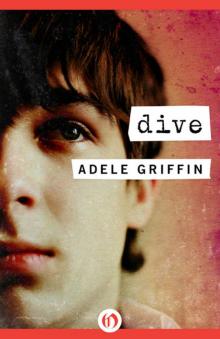 Dive
Dive V is for...Vampire
V is for...Vampire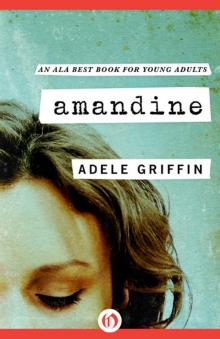 Amandine
Amandine The Knaveheart's Curse
The Knaveheart's Curse Picture the Dead
Picture the Dead My Almost Epic Summer
My Almost Epic Summer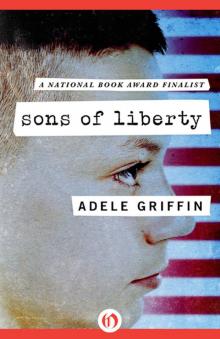 Sons of Liberty
Sons of Liberty Overnight
Overnight Witch Twins
Witch Twins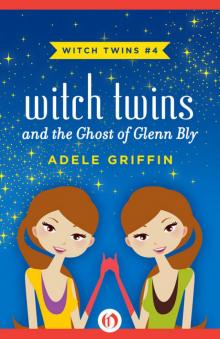 Witch Twins and the Ghost of Glenn Bly
Witch Twins and the Ghost of Glenn Bly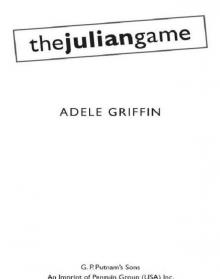 The Julian Game
The Julian Game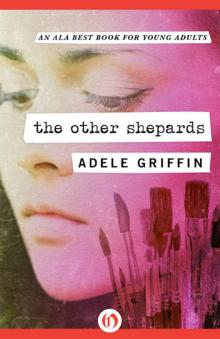 Other Shepards
Other Shepards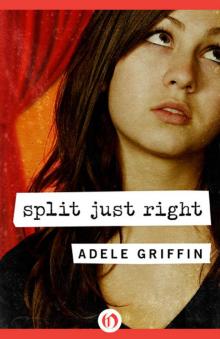 Split Just Right
Split Just Right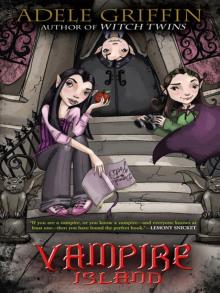 Vampire Island
Vampire Island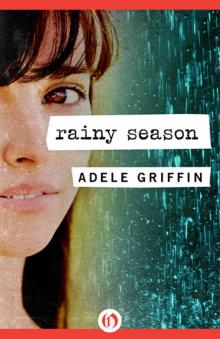 Rainy Season
Rainy Season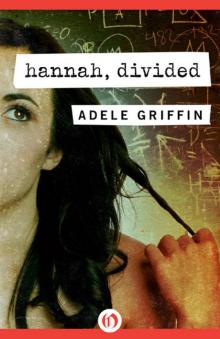 Hannah, Divided
Hannah, Divided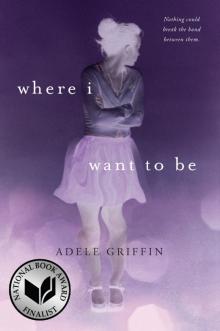 Where I Want to Be
Where I Want to Be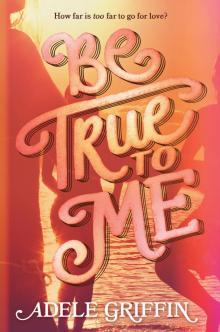 Be True to Me
Be True to Me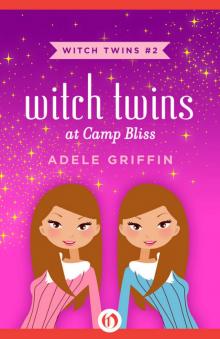 Witch Twins at Camp Bliss
Witch Twins at Camp Bliss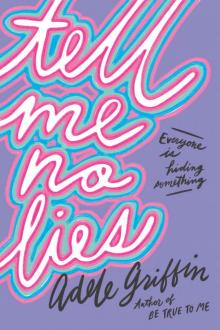 Tell Me No Lies
Tell Me No Lies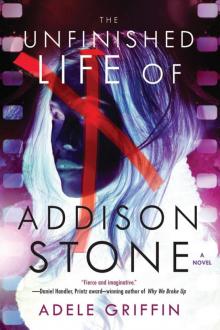 The Unfinished Life of Addison Stone
The Unfinished Life of Addison Stone